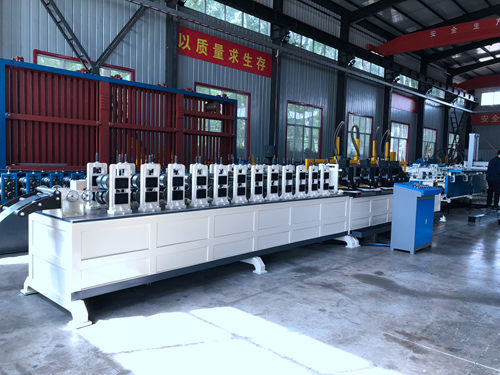
The Innovation of Cold Bending Machines in Noise Barrier Production
In recent years, noise pollution has emerged as a significant environmental concern, particularly in urban areas where large populations reside near busy roads, railways, and industrial zones. To combat this issue, noise barriers have been widely implemented to mitigate sound transmission. The efficiency and effectiveness of these barriers are heavily influenced by the technological advancements in manufacturing processes, particularly in the use of cold bending machines.
The Innovation of Cold Bending Machines in Noise Barrier Production
One of the primary advantages of cold bending machines is their ability to achieve precise dimensions and consistent quality. This precision is crucial for noise barriers, as any gaps or irregularities can compromise their soundproofing effectiveness. Modern cold bending machines are equipped with advanced computer numerical control (CNC) technology. This allows manufacturers to program specific bending patterns and angles, ensuring that every piece fits perfectly into the overall structure of the noise barrier.

Moreover, the versatility of cold bending machines enables the production of various designs and styles of noise barriers to suit different environmental and aesthetic needs. For instance, manufacturers can create sleek, modern barriers that integrate seamlessly with urban architecture or more natural-looking barriers that blend into rural landscapes. This adaptability not only improves the visual appeal of noise barriers but also allows for a more tailored approach to noise control in varying locations.
Additionally, the use of cold bending machines contributes to sustainability efforts within the construction industry. By minimizing waste and energy consumption associated with heating materials, manufacturers can significantly lower their environmental impact. The ability to recycle and reuse steel is another factor that enhances the sustainability of noise barrier construction, aligning with global efforts to promote eco-friendly practices.
Another aspect worth mentioning is the efficiency of using cold bending machines in production. These machines can operate at a high speed, reducing production time and costs. The faster manufacturing process means that projects can move forward without delays, which is particularly important for urban development initiatives where time-sensitive contracts are common.
In conclusion, cold bending machines represent a critical innovation in the manufacturing of noise barriers. Their precision, versatility, efficiency, and contribution to sustainability make them indispensable tools in addressing the growing concern of noise pollution. As urban areas continue to expand, the demand for effective noise mitigation solutions will only increase. Therefore, investing in advanced cold bending technology will be essential for manufacturers aiming to meet this demand. The future of urban living may well depend on our ability to create a quieter, more harmonious environment through the application of such innovative machinery.